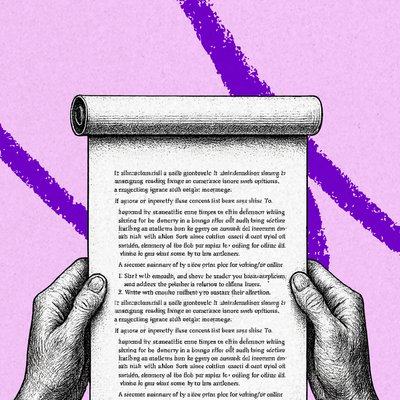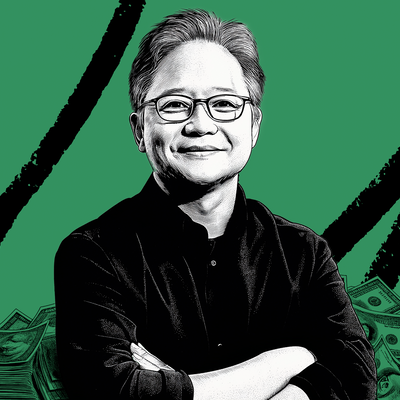
Before we get started, I wanted to let you know that I'm teaching a new cohort of my course, How to Write With AI. Take it from me: There is no higher ROI activity you can engage in than writing. If you make writing a serious practice, your career will flourish and your intellect will thrive. But writing is hard. Thankfully, AI tools like ChatGPT, Claude, Spiral, and Lex make it far easier to transform blank pages into powerful content. I will teach you how and show you my exact workflow for writing this column.
The four-week cohort-based class runs from Feb. 13 through Mar. 6 and includes:
- 4 live lectures and hands-on workshops
- A writing group overseen by an Every-trained editor
- Interviews with successful internet writers including Every CEO and cofounder Dan Shipper
- 30 days of quick writing exercises
- Your own, customized LLM prompt for improving your drafts
- A chance to share your writing with Every’s 90,000-plus readers
Over 90 students—including founders, aspiring writers, engineers, and professors—have already taken it. Check out the course website for more information and to enroll. Act quickly: There's a $300 early bird discount, and if you register by Jan. 23, you’ll jump ahead of the nearly 10,000-person waitlist for our new AI email tool Cora:
And now, on to my piece...
On Monday, tech is taking over Washington, D.C.
When he begins his second term in office, Donald Trump’s administration will be teeming with Silicon Valley personalities. Vice President-elect J.D. Vance is a Peter Thiel protégé. Sriram Krishnan, who’s been named a senior advisor for AI, is a former Andreessen Horowitz partner. David Sacks, the incoming White House AI and crypto czar, is an influential venture capitalist and All-In podcast host. And then there’s whatever Elon Musk is doing with DOGE, a new government efficiency commission.
The East and West Coast power centers seem to be merging more each day. Marc Andreessen himself is now recruiting for government positions, while others in the Thiel-ian orbit will occupy the positions of Deputy Secretary of Health and Human Services (Jim O’Neill), ambassador to Denmark (Ken Howery, who will presumably try to help Trump buy Greenland), and Under Secretary of State (Jacob Helberg). Surely more will join.
Reading this list may make you caw like a bald eagle and shoot a firework out of your window. Alternatively, it may make you spontaneously combust. What matters more than your opinion of these men is how they are positioned to affect policy in the United States and abroad. Regulation on crypto, open-source AI, energy policy—all of it seems up for revision during this administration. It’s safe to assume these Trump whisperers will influence tech regulation—or deregulation—directly.
While considering the looming eastward migration of tech luminaries, I found myself interested in a new book published by Stripe Press called Boom: Bubbles and the End of Stagnation by Byrne Hobart and Tobias Huber. (We’ll call them H&H.) Hobart (with whom I have co-written a piece) writes a popular business and tech newsletter and has an intellect that makes me feel dumb. Huber is an angel investor and a partner at a venture capital fund that I don’t know personally.
Their work examines how bubbles—which have a popular reputation for being stupid, wasteful, and harmful to investors—can actually accelerate technological progress. (We’ll get to this later, but they don’t exactly define bubbles.) The book ends with a section on how the “techno-scientific sublime…invokes a spiritual or religious experience of transcendence.” In other words, technology can be viewed as a form of religion. That’s all to say this book takes on the ambitious task of redefining an established economic phenomenon and writing a bible for progress at the same time.
Both Andreessen and Thiel blurbed it. Andreessen said that Boom “makes the case that humanity’s greatest risk is not climate change or misaligned superintelligent Al but not making enough progress.” Thiel said, “The dot-com bubble looked like the peak of delusion, but the truly deluded were those who wanted to indefinitely defer the future.” Shoot, even the book’s philosophical section is mostly couched in the frameworks of René Girard, Thiel’s favorite philosopher.
Boom acts as a handy guide to the ideological underpinning of this new fusion of political and technological power. It is an amalgamation of hyper-influential, relatively niche ideas that have been quietly driving much of the libertarian discourse around Silicon Valley for the last decade. By studying it, I hoped to gain some insight into what the next few years of tech influence in Washington may hold.
What is a bubble, anyhoo?
H&H’s argument can be compressed into three components:
- There has been economic, technological, and cultural stagnation since the early 1970s. The reasons are as varied as low male testosterone levels and the abandonment of the gold standard.
- Society can escape this stagnation through “speculative bubbles.” While some bubbles may have resulted in many people losing money, the underlying technological infrastructure built to accommodate the bubble ended up benefiting society in other ways.
- There are “messianic” properties to technology, which acts as a form of “salvation” for society. Because bubbles require a generous dollop of fervor and irrationality, this pseudo-spiritual belief in technology’s divine nature is a necessary component of bubbles and, by extension, progress in society.
It’s true that bubbles do sometimes produce useful outcomes. For instance, the dot-com bubble led to global fiber-optic cable deployment. However, in both the book and in the broader techno-utopian philosophy that it preaches, the details are underdeveloped.
Progress is a thin religion. Building technology for the betterment of humanity is more bumper-sticker philosophy than moral credence. Humanity is such a massive thing that it is easy to lose sight of the individuals who make up the blob of us. And in the absence of a grounded, personal philosophy—one maniacally focused on the individual—greed has an ugly way of rearing its head. (Witness the ravages of creative destruction, which too often is seen as a cost of making progress, rather than something to triage for the individuals harmed along the way.) My concern with these Thielien individuals in government isn’t even their goals. I strongly believe that we should build more, invent more, create more. But because the details of a progress philosophy are so vague, and so many of these players have financial stakes in the outcomes and thus real conflicts of interest, I worry that the accumulation of money and power looks like progress to them—and that can mean social stratification for everyone else.
The Only Subscription
You Need to
Stay at the
Edge of AI
The essential toolkit for those shaping the future
"This might be the best value you
can get from an AI subscription."
- Jay S.
Join 100,000+ leaders, builders, and innovators

Email address
Already have an account? Sign in
What is included in a subscription?
Daily insights from AI pioneers + early access to powerful AI tools









Comments
Don't have an account? Sign up!
We're trading a theocracy that excludes women and nonbelievers from influence for a bubbleocracy that excludes women, nonbelievers, and the not already rich? Perfect dystopia. No notes.